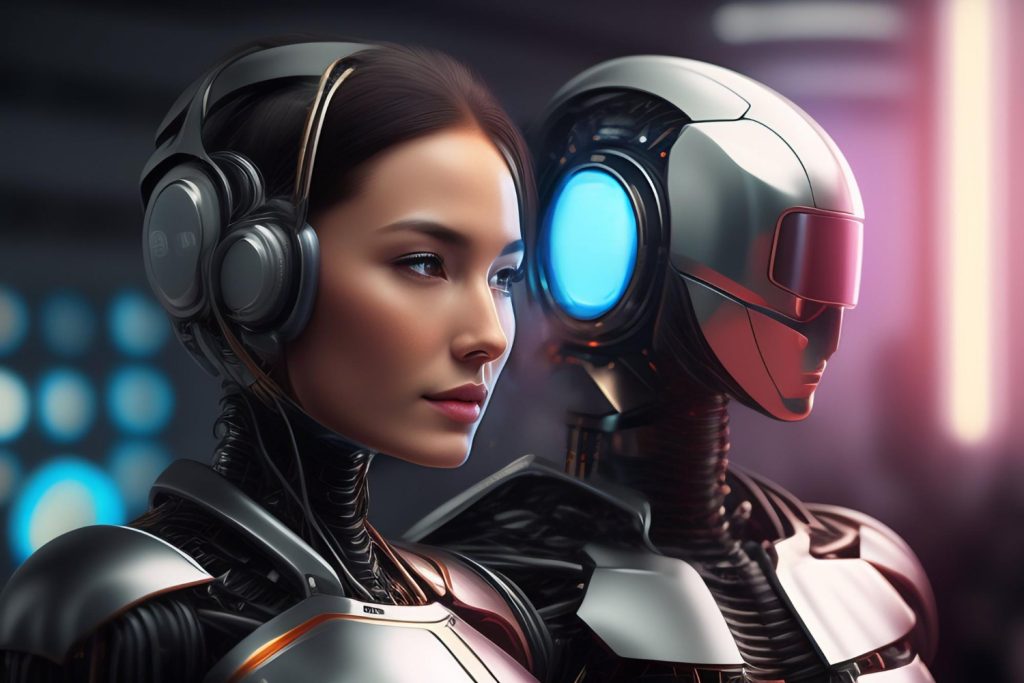We live in a digital world, where technology is everywhere around us. We use smartphones, laptops, tablets, smartwatches, and other devices to communicate, work, learn, play, and create. We access information, entertainment, and services through the internet, social media, and online platforms. The amount of times we interact with artificial intelligence becomes more and more – blurring the lines between human communication and communication with a not so human entity. Constantly, we are connected with and networked by the digital technologies – what makes that of us?
What is a ‘human’ nowadays?

These technological developments most certainly have some effect on our identity, our society and our network. A dichotomy that has a central point in this blog is the distinction between human and machine – how much of a distinction is there still left? This is exactly one of the the main points of A Cyborg’s Manifesto (1985) by Haraway is the blurry lines that have appeared between dichotomies that were very logical before. The oppositions that are interesting for this blog post are ‘human/animal’ and ‘human/machine’. These three categories come together in what Haraway advocates for: a hybrid and political vision on the intertwinement of human, nature and machine. Especially technology has become an inalienable part of ourselves.
At this point in the existence of humankind, we are all cyborgs to some extent. We are all influenced by and dependent on technology, and we are all part of the digital networks that connect us. We are all composed of multiple versions of ourselves, namely the version online and the our ‘real life’ version. The situations in the offline world we have to relate ourselves to, will be affected by the fact technology exists, since the online version of us is part of our complete identity which affects how we behave.
What we discussed in a class I took in the second year of my bachelor is the connection we have with the devices that are in our close surroundings and that we know well, or at least think we know well. What do these devices tell us and what make these devices do us? In other words: what effects do the messages the devices send to us have on us? Do they change us in a particular way?
I think the answer is ‘yes’.
My Apple Watch was my go to watch – I used it every day. It did not only tell me the time, it also changed the way I used my time. The moment I saw a message (or actually: felt the message since my watch vibrates whenever someone messages me) I felt like I had to react to it right away. Things had to be handled now. Of course the idea of these smartwatches is to keep you up to date, but now I had to keep up with my watch. This ‘keeping up with’ also was the case whenever it mattered the activities circles Apple Watches have. These circles tell you for example how many times you stood up during an hour, and will tell you to stand up when you are behind.
Who is in charge now? And what or who tells what or who what to do? It was the machine telling the human to stand up, but didn’t we think we were still in charge? On the macro-level: yes, since Apple is made by humans. On the micro-level, I felt like I was the robot being told what to do.
My Appke Watch has not felt my wrist for quite some time now.



I feel the same way. Of course us humans have made the technology that is now part of our life on a daily basis. But the influence these things have on our life is huge. Personally, I tend to switch off the notifications from- for example- Instagram from time to time, because I feel like I can’t keep up with it and its keeping me from other tasks I have to do during the day.